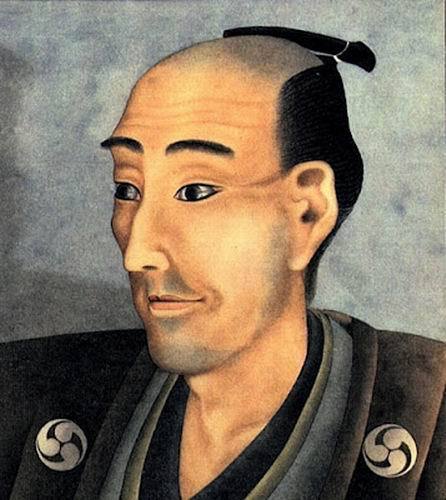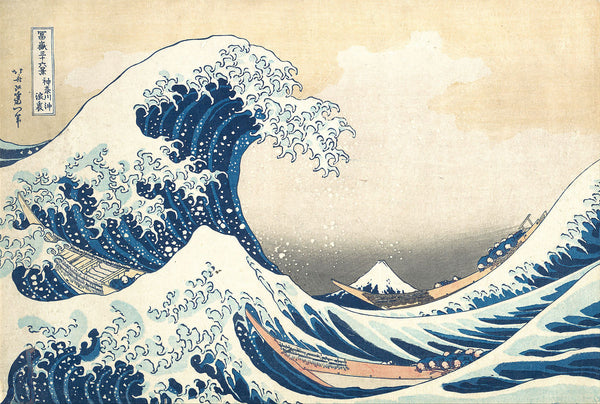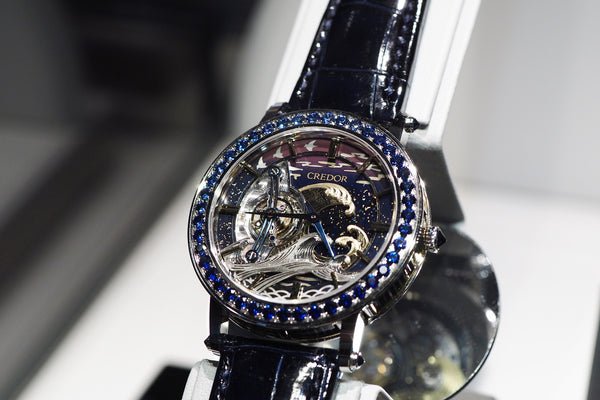That's Not The Great Wave off Kanagawa on the SKX007 Caseback
Japan is famous for artworks depicting the beauty of nature. One of the prime examples is The Great Wave off Kanagawa - probably the most recognizable piece of art from Japan. Also known as just “The Great Wave”, it is the vibrant illustration crafted in late 1831 during the Edo period of the country’s history by Japanese artist Hokusai Katsushika (1760-1849).

A very talented artisan indeed. Source: Woodblock Prints World
Katsushika is one of the greatest Japanese woodblock printmakers, painters, and book illustrators. Some people think that this famous work is pictured on the SKX007’s caseback…let’s learn more!
What Is the Wave off Kanagawa?
A part of a series of woodblock prints called Fugaku Sanju-Roku Kei (Thirty-Six Views of Mount Fuji) , The Great Wave is a woodblock print that depicts three boats moving through a storm-tossed sea with a large wave forming a spiral in the center with Mount Fuji in the background.
One of the most interesting aspects of this print is the extended blue wave which is about to break along with the crash of its claw-like crest. The wave is like a huge monster preparing to strike the boat, showing the weakness of human beings when confronted by the power of nature.

Confusingly, the "36 views" series includes 46 woodblock prints. This one is the most well-known. Source: MET Museum
By using Prussian Blue, Hokusai revolutionized Japanese printmaking. The dark blue pigment imported from England through China was a new material at that time.
In addition, we see two contrasting aspects in the small woodblock print. The wave in the foreground and Mount Fuji in the background not only provide perspective, but also represent the unpredictability of life.
The unique expression of Katsushika also has influenced European artists. At that time, his prints began to circulate widely through Europe.

Another image from the Fugaku Sanju-Roku Kei. Source: Heksis
The Great Wave became a source of inspiration for a variety of artists and musicians, such as Vincent Van Gogh, Claude Debussy, Claude Monet, Hiroshige, and many more.
Today, as the work is widely known, you can find copies of this masterpiece in several Western institutions, such as the Metropolitan Museum of Art in New York, the British Museum in London, the Art Institute of Chicago, and the National Library of France.
Does the SKX007 Caseback Use the Wave of Kanagawa?
The SKX007 is an iconic diver from Seiko and also the most popular timepiece among watch modders. The famed SKX is also one of the timepieces that Seiko released with the Tsunami logo on the caseback.

The intriguing symbol means something a lot more technical. Source: Turis Campo
Some people think that the caseback image is based on Katsushika’s famous wood print, The Great Wave. With so many Seiko mod watches carrying Seiko SKX007 Parts, there are loads of modded watches out there with a wave on the caseback.
But actually, the Seiko Tsunami logo has nothing to do with this famous art icon. The claim that the Tsunami logo is a representation of The Great Wave is a common misconception.
Although there are some similarities, the two symbols are completely unrelated. As said, The Great Wave uses the image to comment on the duality of nature through a wave, a view of Fuji, and the harsh experience of Japanese fishermen.
On the other hand, the Seiko tsunami logo represents the more stylized caseback wave logos previously used by Seiko.

Source: Watchuseek
In the caseback designs, the one wave logo was meant to denote water resistance of 5 bars and the 2 wave logo was meant to denote water resistance of 10 up to 20 bars. Neither denotes an ISO diver rating, but the Tsunami logo does.
On the SKX007 caseback, we see the Tsunami logo, and coupled with the 200m marking on the dial - this signifies that the watch is suitable enough for scuba diving although not quite made for saturation diving.
So, did Seiko ever actually use The Great Wave to decorate their watches?
The answer is yes, and no.
The Fugaku Tourbillon - A Credor Limited Edition
The Fugaku Tourbillon was released under Seiko’s luxury brand, Credor, which carries the watchmaker’s tradition into the modern era with high-end technology and insane craftsmanship. It is also the first Tourbillon that Seiko has ever released.
Inspired by the artist Hokusai’s famous print The Great Wave, the timepiece was brought to life by three of Seiko’s most talented craftsmen. It was envisioned to be the ultimate artisan watch. It was also lacquered by Isshu Tamura who is well-known as one of the most sought-after Japanese lacquer artists.

The Seiko Tourbillon features the Great Wave motif on the dial and caseback. Source: Professional Watches
It is a limited edition model with only eight pieces in the collection. The Fugaku is designed with delicate mother-of-pearl inlays in the upper half that depict stylized clouds and birds while the lower section features a traditional wave pattern.
When Seiko decides to pay homage to an important piece of Japanese artwork, it does it in spectacular fashion. The Fugaku is a masterpiece, and one of the series should be on display in the Louvre.
Making Art With Your Seiko Watches
Modding a Seiko watch is a great way to create your own piece of wearable art. In addition to watch mod parts, there are loads of custom dials out there you can use to make a watch that is totally unique. In fact, dials that actually feature The Great Wave off Kanagawa are commonly used in the modding scene!

If you are looking for other Japanese-inspired modding parts, you can check out our popular Sakura dials with a spiraling pattern reminiscent of leaves of the pink cherry blossom tree. We also have Seigaiha rotors which allude to the waves of the sea, perfect if you are rocking a display caseback on your mod.
At namokiMODS, we have some of the best watch spare parts in the market. Check out our online catalog to see how deep our inventory of watch mod parts really is.
We also have a great selection of Seiko spare parts, if you want to use OEM parts in your next watch mod!

Comments
Martin said:
Back when Hokusai’s wave was painted everyone in japan was painting waves very similar. It was a thing in their culture. The Seiko wave predates it and just got more stylized. It does look similar but it is just a youtube myth from the urban gentry that made the fake claim and it got famous.
Mr. James Duffy said:
The Great Wave off Kanagawa is a wood block print, that is its medium. Its intention is to examine the relationship between Man and Nature. The wave on the Seiko case back is certainly influenced by the artistic work but it is not the work. If anything Hokusai’s Great Wave is the archetypal large right-moving wave and any similar depiction, especially from a Japanese company, will always be assumed to be associated with Hokusai’s work and Japanese culture and heritage. However, the wave on Seiko’s case backs is a stylized wave icon on the back of a watch to represent its water resistance—that is its intention and it was neither created by Hokusai nor does it explicitly follow the artistic intention of Hokusai’s work.
Steven Wymor said:
Um, it’s all well and good to say that the Seiko caseback is not a depiction of Hokusai’s Great Wave off Kanagawa, but as maybe the single most popular piece of art in Japanese culture, Seiko’s wave caseback design was undoubtedly influenced by it. The Great Wave print has been adapted endlessly for commercial use on Japanese products for over a hundred years. The only elements missing from Seiko’s design are Mount Fuji and the fishermen. But the bold graphic elements in Hokusai’s original print are all there even if they are highly stylized especially the graphic diagonals in the depiction of the ocean. If Seiko wanted to adapt their existing caseback wave designs, they could have done that rather easily, but they made a distinct break from that rather staid and static design tradition for something much more dynamic as seen in Hokusai’s print. I have no doubt that the Seiko design was almost certainly influenced by the original print by Hokusai even if it’s not a one to one copy. If not, that would be like saying the Beatles weren’t influenced by Elvis. When an artist’s work is so widely known and in broad circulation, it’s hard to dismiss it as not being influential, even if unintentionally.